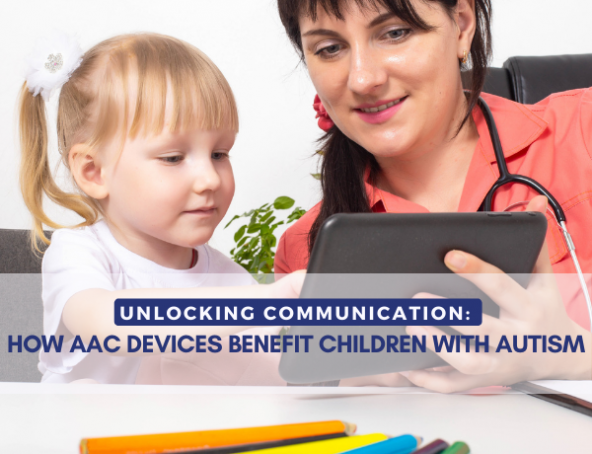How AAC Devices Benefit Children with Autism

For parents of autistic children, fostering effective communication can be a journey filled with challenges and triumphs. Augmentative and Alternative Communication (AAC) devices emerge as invaluable tools in this process, offering pathways for expression and connection where verbal communication may be limited. In our previous blog, Exploring Augmentative and Alternative Communication Devices (AAC) for Autistic Children: A Parent's Guide, we explained what they are and how they work.
In this blog, we explore 5 ways in which AAC devices aid children with autism:
- Facilitating Expression: AAC devices provide a platform for autistic children to express their thoughts, needs, and emotions in various contexts. For instance, imagine a nonspeaking autistic child using a picture-based communication board to indicate their desire for a favorite toy or snack. By selecting the corresponding image, they communicate their preference and experience a sense of empowerment through effective expression.
- Enhancing Social Interaction: AAC devices play a crucial role in fostering social engagement among autistic children. Consider a scenario where a child with autism uses a speech-generating device during a playdate. With the device, they initiate conversations, ask questions, and share their interests with peers, promoting meaningful interactions and fostering friendships despite verbal communication challenges.
- Supporting Language Development: AAC devices serve as catalysts for language acquisition and development in autistic children. Picture-based communication systems, for example, expose children to a diverse range of vocabulary and concepts. Through consistent use, children gradually expand their language skills, transitioning from single words to more complex phrases and sentences, thus enhancing their overall communication abilities.
- Reducing Frustration: Difficulty with verbal communication can often lead to frustration and meltdowns in autistic children. AAC devices offer a means to circumvent this frustration by providing alternative methods of expression. Imagine a situation where a child encounters difficulty articulating their emotions verbally but uses their AAC device to select an emotion icon, effectively conveying their feelings and averting potential distress.
- Promoting Independence: AAC devices empower autistic children to communicate independently, fostering a sense of autonomy and self-reliance. Tablet-based AAC applications, for instance, enable children to navigate communication grids, select phrases, and initiate conversations without constant assistance. This independence not only boosts confidence but also encourages active participation in various social and academic settings.
From facilitating expression and enhancing social interaction to supporting language development and promoting independence, AAC devices play a pivotal role in unlocking the potential of children with autism. By embracing these tools and integrating them into everyday life, parents can empower their children to communicate effectively, connect with others, and thrive in a world where every voice deserves to be heard.
If you are interested in getting AAC device evaluation for your child, visit our AAC webpage or fill out this AAC interest form.
Contact our Family Support Team if you would like to learn how to get started with any programs and services that we offer. Our Family Support Team is always available to help and is available at no charge to all members of the autism and developmental disability community. Schedule a free phone appointment that works with your schedule: AZAunited.org/supportcall
You may also be interested in:
For more helpful resources and information, follow AZA United on social media:




